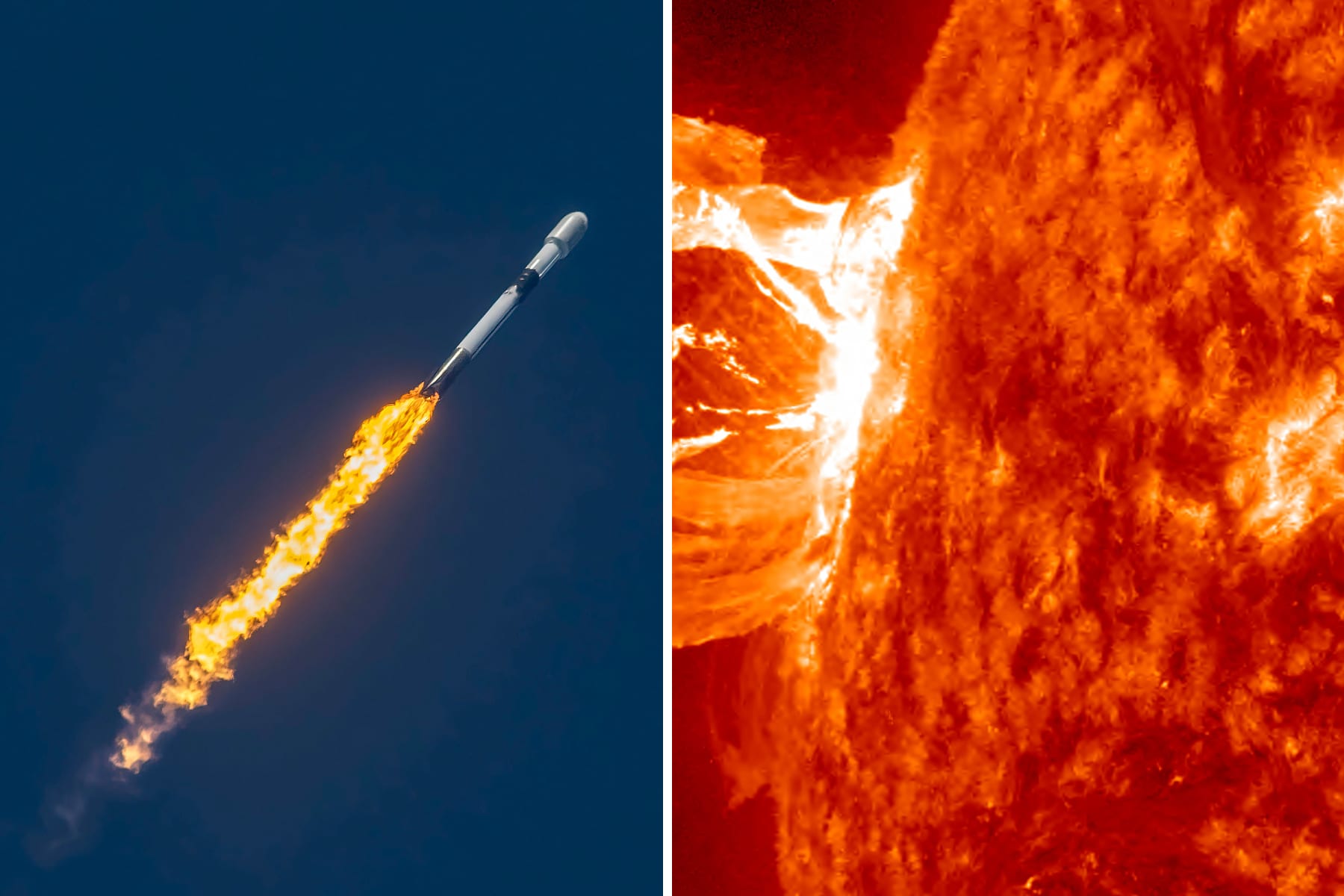The sun has been hibernating – but it’s waking up, and the next few years may see more satellites damaged or destroyed by solar storms than ever before.
Elon Musk’s SpaceX is feeling the pinch of that solar threat this week: The company expects to lose nearly a full launch’s worth of Starlink internet satellites after a geomagnetic storm disrupted the Earth’s atmosphere and sent about 40 of the spacecraft to an early, fiery demise.
But these storms are not uncommon, space weather experts explained to CNBC, and are only expected to worsen over the next few years. The sun started a new 11-year solar cycle in December 2019 and is now ramping to a “solar maximum” that is expected to hit in 2025.
“The reason why [solar storms have] not been a big deal is because, for the past three to four years, we’ve been at what we call ‘solar minimum,'” Aerospace Corp research scientist Tamitha Skov told CNBC.
Notably, the recent solar minimum coincides with a massive spike in the number of satellites in low Earth orbit. About 4,000 small satellites have been launched in the past four years, according to analysis by Bryce Tech – with the vast majority of those operating in low orbits.
“A lot of these commercial ventures … don’t understand how significantly space weather can affect satellites, especially these small satellites,” Skov said.
The solar cycle vs. satellites
A geomagnetic storm comes from solar wind generated by the sun’s activity. The Earth’s magnetic shield dumps the solar storm’s energy into our planet’s upper atmosphere and heats it up.
“Most people really enjoy it, and they don’t even realize it – because what they’re enjoying is an aurora,” Skov said.
The National Oceanic and Atmospheric Administration measures geomagnetic storms on an increasing severity scale of G1 to G5. The storm which destroyed the Starlink satellites last week was expected to be a G1, which Erika Palmerio – a research scientist at Predictive Science – explained is both minor and “quite common,” happening as much as 1,700 times in the 11-year solar cycle.
“The G5 is the extreme storm and those ones are way, way more rare. We find about four of them per cycle,” Palmerio said.
Palmerio emphasized that a G5 storm is a threat to things such as electrical grids or spacecraft operations, but not people.
“There are no risks for humans on ground with these storms,” Palmerio said.
The side effect of the jump in atmospheric density is an increased drag on satellites in low Earth orbit, which can reduce a spacecraft’s orbit – or, in the case of the Starlink satellites, cause them to reenter and burn up.
Increased radiation of geomagnetic storms can also damage spacecraft, Palmerio said, burning instruments or detectors onboard.
Skov emphasized that Starlink satellites are “very small” but have large solar panels for power, essentially giving each spacecraft “massive” parachutes.
“It was kind of this recipe for disaster when it came to drag,” Skov said. “Some of us in the space weather community have been talking about Starlink satellites falling out of the sky for years – because we knew it was just a matter of time as soon as our sun started getting active again.”
Additionally, the Earth’s “spongy” atmosphere means there isn’t a specific minimum altitude in orbit that is safe, according to Skov. The Starlink satellites recently destroyed were at an altitude of 210 kilometers having just launched. That’s well below the 550 kilometer altitude where the rest of the network’s satellites are raised to, but Skov said “the potential for drag” still exists at the Starlink operational orbit.
History’s warning
Skov and Palmerio emphasized that destruction due to geomagnetic storms happens more often than commonly thought, giving examples from historical solar events.
“In 1967, NORAD [the North American Aerospace Defense Command] lost connection to half its catalog of satellites because of a solar storm,” Skov said – an event that nearly led to a nuclear war.
Storms in 1989 took down the electrical grid in Quebec, Canada, halted trading on the Toronto Stock Exchange, caused a sensor on the Space Shuttle Discovery to malfunction inflight, and is credited as the cause of the Solar Maximum Mission satellite falling out of orbit.
“I’m only scratching the surface,” Skov said, adding that it also affects GPS systems and satellites phones “all the time.”
The so-called “Halloween Storms of 2003” caused some of the most powerful geomagnetic storms recorded to date, with Palmerio saying the increased radiation caused the destruction of scientific instruments in space ranging from Earth’s orbit to the surface of Mars.
The major difference in the current solar cycle, compared to the previous one that peaked in April 2014, is the thousands more satellites in low Earth orbit.
“This is the wild, wild west,” Skov said.
